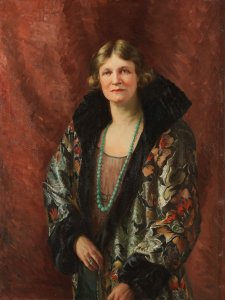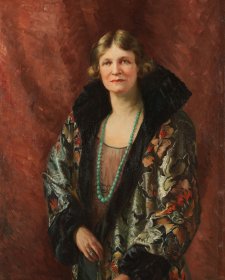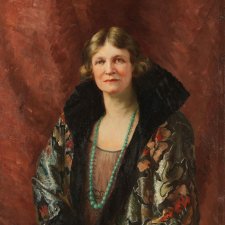Vida Goldstein (1869–1949), feminist and activist, was the first woman in the British Empire to stand for election to a national parliament. Of Polish, Irish and Scottish heritage, she was the eldest child of socially progressive parents who fostered her interest in issues of education and welfare. After attending Presbyterian Ladies College, Melbourne, she opened a school with her sisters and during the same period became active in the fight for women’s suffrage. She was appointed general secretary of the United Council for Women’s Suffrage in 1900 and established the paper The Woman’s Sphere. An able, quick-witted public speaker, in America in 1902 she gave evidence to a Congressional committee on women’s suffrage and attended the International Council of Women Conference before returning home to run for a Senate seat in the 1903 Federal election. She was unsuccessful despite attracting over 50 000 votes. Undeterred, she set about to educate women on the matter of the vote, Victorian women still being unable to vote in state elections despite being granted the right to do so in Federal polls in 1902. Goldstein stood for parliament again, without success, in 1910, 1913, 1914 and 1917, campaigning on equal pay, equal property rights, industrial reform and many other issues. She launched her second paper, the weekly Woman Voter in 1909; and in 1911 the militant Women’s Social and Political Union invited her to London, where she was touted as ‘one of the foremost leaders of the Australian women’s movement … now helping her sisters in England to win their freedom’. A committed pacifist, during World War I she served as chairman of the Peace Alliance and formed the Women’s Peace Army with the English suffragette, Adela Pankhurst. After the war she took an increasing interest in international matters, advocating disarmament and the pursuit of better living standards. She died from cancer in 1949.
This photograph shows Vida Goldstein (right) with compatriots Margaret Fisher (centre) and Emily McGowen (second from right) – the wives of the Australian prime minister and NSW premier – who led the Australian marchers in the 1911 Suffragette Demonstration. Parades were typical subjects for the Melbourne-based Rose Stereograph Company. Stereographs are images taken with a twin-lens camera, that appear three dimensional when viewed through a special viewer.
Purchased 2011



On one level The Companion talks about the most famous and frontline Australians, but on another it tells us about ourselves.



Spanning the 1880s to the 1930s, this collection display celebrates the innovations in art – and life – introduced by the generation of Australians who travelled to London and Paris for experience and inspiration in the decades either side of 1900.



First Ladies profiles women who have achieved noteworthy firsts over the past 100 years.